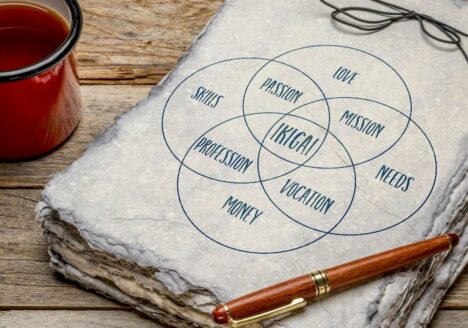Speed reading, at its core, is a method for optimizing how we engage with written information. Within the CORE Compass Framework, it serves as a powerful tool for advancing intellectual development and nurturing lifelong learning. By improving reading efficiency, speed reading helps individuals explore new ideas, manage information effectively, and maintain intellectual agility—all essential components of a balanced and fulfilling life.
Speed Reading and the CORE Compass
The CORE Compass Framework emphasizes balance across four pillars: Curiosity, Resilience, Vitality, and Fulfillment. Speed reading aligns particularly well with Curiosity and Cognitive Growth, while supporting Resilience and Operational Vitality:
- Curiosity and Cognitive Growth: Speed reading enhances the ability to explore a wider range of topics, encouraging intellectual curiosity. By enabling quicker processing of information, it makes engaging with diverse ideas and subjects more accessible, fueling personal growth.
- Resilience and Emotional Equilibrium: Reducing the time and effort required for reading helps alleviate the stress of information overload. By transforming reading into a more efficient and rewarding activity, speed reading promotes emotional balance and reduces cognitive fatigue.
- Operational and Physical Vitality: Although primarily cognitive, speed reading has indirect benefits for physical vitality. Improved focus and mental clarity lead to better decision-making and a more structured, balanced approach to work and life.
Benefits of Speed Reading
Speed reading offers several advantages that align with the CORE Compass Framework’s principles:
- Increased Reading Efficiency: By training the brain and eyes to work more cohesively, speed reading allows for faster information processing without sacrificing comprehension.
- Sharper Focus and Attention: Regular practice of speed reading techniques demands high levels of concentration, which can enhance cognitive control and mental stamina.
- Improved Retention and Organization: Tools like Mind Mapping (Buzan & Buzan, 2012) complement speed reading, helping readers retain and organize information more effectively.
- Productivity Gains: Whether used to manage professional tasks or academic workloads, speed reading helps individuals process content more efficiently, freeing time for deeper analysis or creative pursuits.
Integrating Speed Reading into Your CORE Compass Practice
Speed reading is not a magic solution but rather a skill that, when approached thoughtfully, supports balanced personal growth. To integrate speed reading effectively:
- Learn the Techniques: Educate yourself about speed reading strategies through trusted resources such as The Speed Reading Book by Tony Buzan (2007) or Breakthrough Rapid Reading by Peter Kump (1999). Start with methods like subvocalization reduction, peripheral vision expansion, and rapid serial visual presentation (RSVP).
- Develop Consistent Practice: Dedicate time to practice speed reading regularly. Consistency helps to build fluency while maintaining comprehension.
- Measure and Adapt: Track your progress by noting your reading speed and comprehension over time. Focus on gradual improvements and adjust techniques as needed.
- Pair with Cognitive Tools: Complement your speed reading practice with Mind Mapping (Buzan & Buzan, 2012) or reflective exercises to reinforce retention and integrate what you learn into meaningful insights.
Finding the Right Role for Speed Reading
While speed reading offers significant benefits, it’s important to approach the practice with a balanced perspective. For an in-depth exploration of its limitations and the critical role of comprehension, read our companion article: Speed Reading: A Word of Caution – Depth Over Speed.
Conclusion
Within the CORE Compass Framework, speed reading is more than a skill—it is a tool for cultivating intellectual curiosity, reducing stress, and enhancing cognitive vitality. By integrating speed reading into your routine with intention and balance, you can unlock new levels of efficiency and focus, empowering your journey toward a more thoughtful and fulfilling life.
References
Buzan, T. (2007) The speed reading book: the revolutionary approach to increasing reading speed, comprehension and general knowledge. Repr. Harlow: BBC Active.
Buzan, T. & Buzan, B. (2012) The mind map book: unlock your creativity, boost your memory, change your life. Nachdr. Harlow Munich: Pearson/BBC Active.
Carver, R. P. (1990) Reading rate: A review of research and theory. Reading rate: A review of research and theory. San Diego, CA, US: Academic Press.
Just, M. A. & Carpenter, P. A. (1980) A theory of reading: From eye fixations to comprehension. Psychological Review. [Online] 87 (4), 329–354.
Kump, P. (1999) Breakthrough rapid reading. Rev. New York: Prentice Hall.
Rayner, K. et al. (2016) So Much to Read, So Little Time: How Do We Read, and Can Speed Reading Help? Psychological Science in the Public Interest: A Journal of the American Psychological Society. [Online] 17 (1), 4–34.




